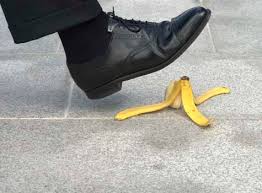3 Simple Ways To Tell When Your Assets Are Turning Into Liabilities
Assets and liabilities are a very important topic especially right here in Canada. There are different definitions of assets and liabilities. If you’re running a business, assets are anything that is owned by you or your business which is expected to yield benefits in future periods either by generating income or from its sale. Liabilities however, are defined in accounting as anything in your possession that makes you have a future financial obligation to anything, or anyone.
In this article, we will be discussing assets and liabilities as defined by most non- accountants. Using this definition, your Assets are those things that you own that make more money for you than they take and your Liabilities are those things that would take more money from you than they make.
It is very important to realize that when it comes to assets and liabilities the tables can turn very quickly, such that those items that formerly made more than they took could suddenly begin to produce less than they take. It is therefore important to periodically review your ‘assets’ to decide if they are maintaining their status or changing classes. Deciding when to do an emergency review will be important so here are some important signs to help you tell when it’s time to have one.
#1. Drop in productivity
When your assets begin to make less and less money than they used to, it is important to make sure you take out time to review just how much they are making and how much they are taking.
#2. Creates additional expenses
When your assets begin to create more expenses than is usually required for maintenance, it is most an important sign that your asset might be changing sides and becoming a liability. It is therefore important that you take out time to review its value.
#3. Loses its function
When an asset loses its function, and no longer serves the purpose for which you acquired it, it might be best to shelve it or sell it if you can. If you follow the advice we gave you in point 1, you will be able to tell when your assets are losing value and you may chose to sell them while they retain some value.
Conclusion
Recognizing the differences between your assets and your liabilities helps you allocate your funds more appropriately. It is also important to realize that how you handle an asset or liability determines what class it remains in. Therefore your actions, decisions and maintenance can make an asset a liability and vice versa.





